 by our College Data Analytics Team
by our College Data Analytics TeamDaymar College - Murfreesboro total enrollment is approximately 139 students.
Male/Female Breakdown of Undergraduates
The full-time Daymar College - Murfreesboro undergraduate population is made up of 82% women, and 18% men.
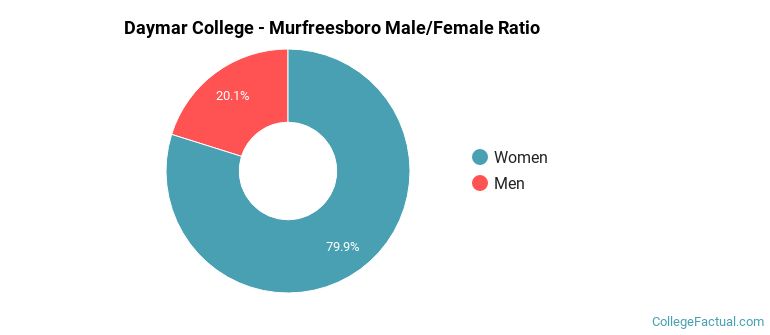
For the gender breakdown for all students, go here.
Daymar College - Murfreesboro Racial/Ethnic Breakdown of Undergraduates
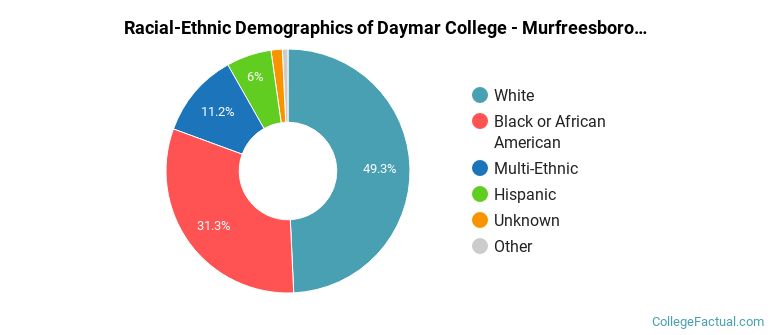
| Race/Ethnicity | Number |
|---|---|
| White | 41 |
| Black or African American | 27 |
| Multi-Ethnic | 12 |
| Hispanic | 9 |
| Unknown | 2 |
| International | 1 |
| Asian | 0 |
| Native Hawaiian or Pacific Islander | 0 |
See racial/ethnic breakdown for all students.
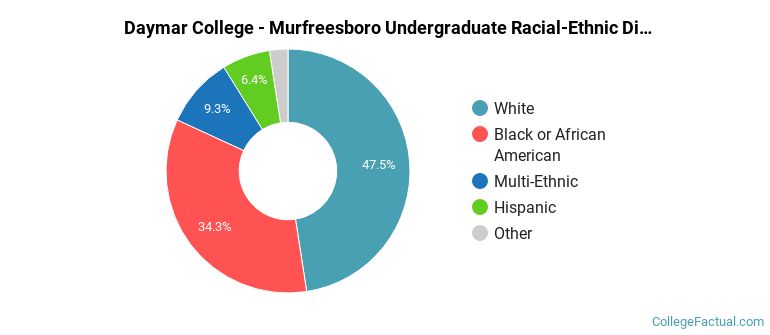
| Race/Ethnicity | Number |
|---|---|
| White | 62 |
| Black or African American | 43 |
| Multi-Ethnic | 19 |
| Hispanic | 9 |
| Unknown | 3 |
| International | 2 |
| Asian | 1 |
| Native Hawaiian or Pacific Islander | 0 |
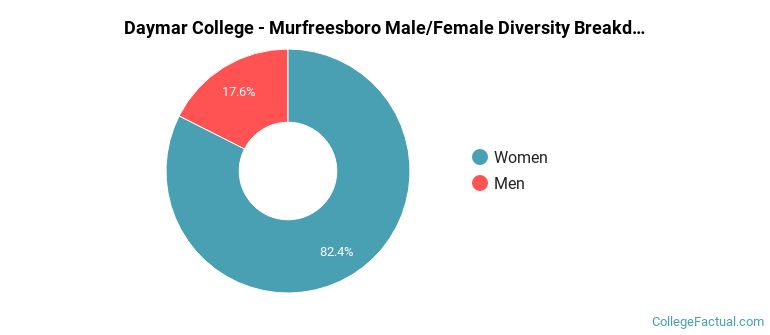
There are approximately 113 female students and 26 male students at Daymar College - Murfreesboro.
Daymar College - Murfreesboro ranks 1,924 out of 2,183 when it comes to geographic diversity.
1.87% of Daymar College - Murfreesboro students come from out of state, and 0% come from out of the country.
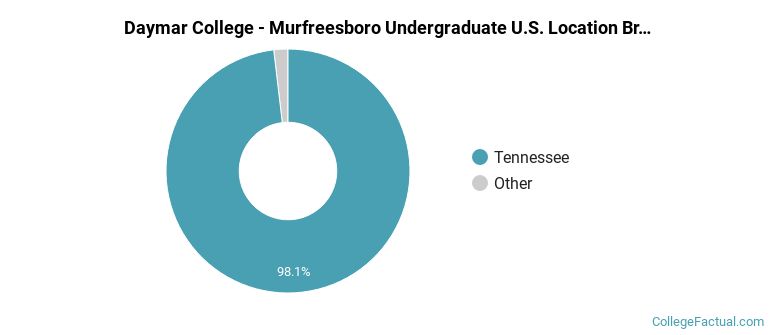
The undergraduate student body is split among 3 states (may include Washington D.C.). Click on the map for more detail.
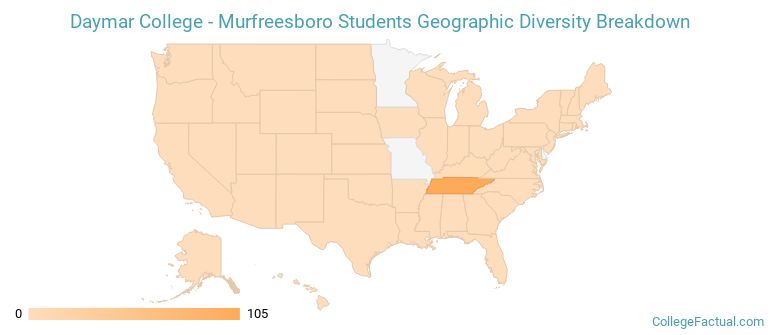
| State | Amount |
|---|---|
| Tennessee | 105 |
| Indiana | 1 |
| Kentucky | 1 |
| Alaska | 0 |
| Alabama | 0 |
Learn more about international students at Daymar College - Murfreesboro.
A traditional college student is defined as being between the ages of 18-21. At Daymar College - Murfreesboro, 15.05% of students fall into that category, compared to the national average of 60%.
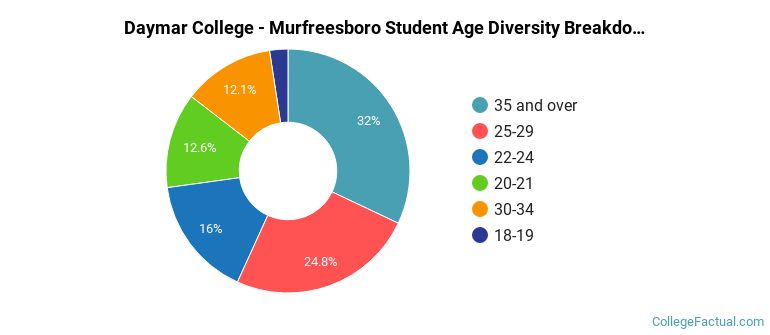
| Student Age Group | Amount |
|---|---|
| 35 and over | 66 |
| 25-29 | 51 |
| 22-24 | 33 |
| 20-21 | 26 |
| 30-34 | 25 |
| 18-19 | 5 |
| Under 18 | 0 |
Footnotes
*The racial-ethnic minorities count is calculated by taking the total number of students and subtracting white students, international students, and students whose race/ethnicity was unknown. This number is then divided by the total number of students at the school to obtain the racial-ethnic minorities percentage.
References
Department of Homeland Security Citizenship and Immigration Services
Read College Factual's Diversity Ranking Methodology.